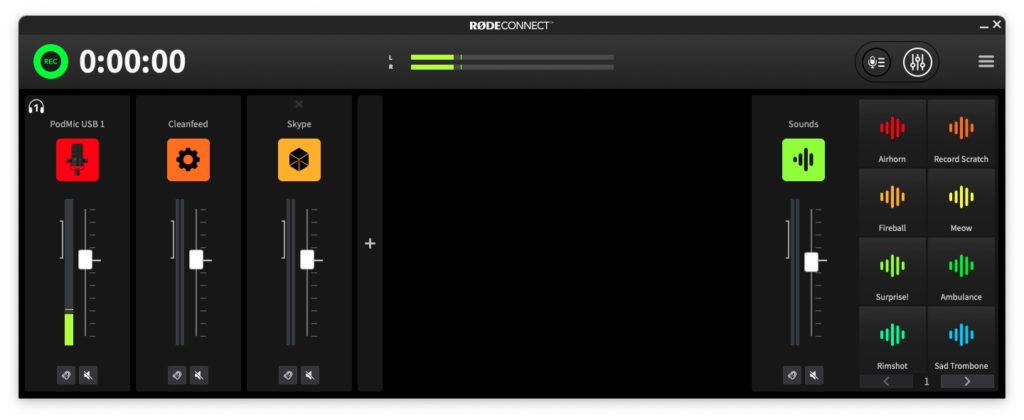Review: RØDE PodMic USB hybrid dynamic studio microphone with powerful DSP & compelling app support
Description

This is my review of the PodMic USB (US$199) from RØDE, a hybrid dynamic studio microphone with a powerful DSP. The PodMic USB is the most versatile hybrid dynamic microphone I have ever known to date, even though it’s the only hybrid dynamic microphone I have ever encountered which allows EITHER using USB OR XLR, but not both at the same time, unlike all other hybrid dynamic mics I have ever tested so far. However, its USB connection is flexible enough to work with computers running the free RØDE Connect program, as well as Android, iOS and iPad devices running the free RØDE Reporter app and even recent RØDECaster models via XLR or USB, as I have covered in previous articles. The test recordings I made for this review include the raw mic and every combination of the DSP effects. I’ll also explain why, considering that it works with the free RØDE Connect and RØDE Unify software, the PodMic is an amazing value proposition, since those programs are almost like a free RØDECaster mixer/recorder, while occupying a fraction of the space with an individually controlled, latency-free headphone output for each PodMic USB participant, whether connected to a computer or to a recent RØDECaster via USB.
In this article
- Benefits of a dynamic microphone like the PodMic USB
- Advantages of being one of the few mics that work with RØDE Connect and RØDE Unify
- Test recordings
- My opinion about each DSP effect in the PodMic USB
- PodMic USB’s physical mute
- About the WS14 windscreen/pop filter
- How to choose between a PodMic USB and an NT-USB+
- How the PodMic USB can save you money
- What RØDE could or should improve in the PodMic USB or its potential successor
- Ratings
- Conclusions
Benefits of a dynamic microphone like the PodMic USB
Traditional logic says that we should always choose and use a dynamic microphone in an untreated room, since the lower sensitivity of dynamic microphones means that we will hear more of the person speaking and less of the room sound (including noise and reverb), assuming both types of microphones are very close to the mouth of the person speaking.
Having said that, some people prefer the sound of a condenser microphone even for the human voice, since generally speaking, condenser microphones have a wider frequency range and can provide more intelligibility with higher frequencies. Simple and fairly inexpensive technology is now leveling the playing field between dynamic microphones and condenser microphones, as I wrote in my article Descript’s «Studio Sound» makes dynamic mics sound like condensers & condensers behave like dynamics. Despite its one click ease of use, I clarified in the article that Descript’s «Studio Sound» is currently a post-process, not for live broadcasting. The other type of technology that is leveling the playing field are the DSP effects now built into certain microphones, including the PodMic USB we are reviewing here (and the NT-USB+ condenser we reviewed previously). The built-in DSP effects like the Big Bottom and Aural Exciter (both from Aphex) in the PodMic USB can make it behave more like a condenser microphone in terms of perceived frequency response.
However, the other advantage of dynamic microphones still remains: Dynamic mics are still less prone to spill/crosstalk from one participant’s voice spilling into another participant’s microphone located in the same room (or the same radio booth), even after proper positioning of cardioid microphones to reject the other participant’s voice.
Advantages of being one of the few mics that work with RØDE Connect and RØDE Unify
<figure style="width: 1024px" class="wp-caption aligncenter">
 <figcaption class="wp-caption-text">Above, RØDE Connect on macOS.</figcaption></figure>
<figcaption class="wp-caption-text">Above, RØDE Connect on macOS.</figcaption></figure>
The free programs RØDE Connect or RØDE Unify for macOS and Windows indeed are almost like having a free RØDECaster mixer/recorder in software. They can record audio, multitrack or stereo. They can play back sound effects or soundbites to get a reaction from an interviewee, local or remote. They can control the level and other DSP options available in the PodMic USB and a few other microphones from RØDE.
Another extremely valuable feature included in those two programs is the fact that they offer multiple, bulletproof/foolproof mix-minus with compatible local microphones (the ones that include a 3.5 mm headphone jack) plus up to two simultaneous remote communication services simultaneously, be they Call in Studio, Cleanfeed (covered in many other articles), SquadCast (now included with Descript) or even (yikes) Skype and Zoom.us. Even though the last two examples (Skype and Zoom.us) are not the first choice for audio or video quality for a professional program (as the prior services indeed are), they are great when it’s the only way we to reach a particular individual or organization, i.e. SkypeOut (now renamed Calls to mobiles and landlines) to call an individual who doesn’t own a computer or a company or embassy. The possibilities with these two programs (Connect and Unify) and those patched services are nearly endless.
<span styl





